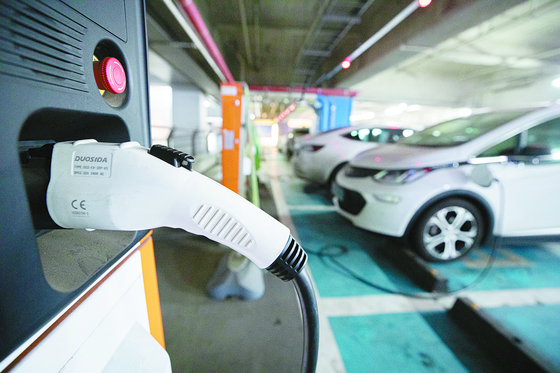![An electric vehicle charging station installed in the parking lot of a large shopping mall in downtown Seoul on the 21st. [뉴스1]](https://i0.wp.com/pds.joins.com/news/component/htmlphoto_mmdata/202101/22/1ae0c8a6-7bf9-4095-946c-9cb24c025b75.jpg?w=560&ssl=1)
An electric vehicle charging station installed in a large shopping mall parking lot in downtown Seoul on the 21st. [뉴스1]
Hyundai Kona up to 8 million won, Tesla Model S ‘0 won’.
Electric vehicle subsidies will change from this year
100% payment for vehicles under 60 million won
Less than 90 million won in 50% cycle
“It will be more advantageous to domestically than expensive imported cars”
This is a subsidy that the government gives when buying electric vehicles starting this year. Model S, which gave a subsidy last year, will not give a penny from this year. On the 21st, the Ministry of Strategy and Finance, the Ministry of Trade, Industry and Energy and the Ministry of Environment announced a plan for reorganizing the subsidy system for electric vehicles. The’Tesla boom’ in Korea is also expected to be hit.
The core of the government reform plan is to reduce subsidies that were paid up to 8 million won per unit (excluding subsidies for local governments). Starting this year, fuel economy subsidies (up to 4.2 million won) and mileage subsidies (2.8 million won) are added, and only up to 7 million won will be paid. Performance subsidies (up to 500,000 won) and energy efficiency subsidies (up to 500,000 won) are separate. Last year, the government subsidies paid to nine electric vehicles, including Hyundai-Kia Motors, GM Korea, Renault Samsung Motors, and Tesla, averaged 7.76 million won. Yoon-jung Jang, head of the Employment Environment Budget Division of the Ministry of Equipment, said, “We intend to provide more subsidies to electric vehicles with high battery efficiency.”
Another feature of this reorganization plan is that subsidies are paid differently depending on the price of the vehicle or not paid at all. 100% of the subsidy is given for cars with a car price of 60 million won or less, but only 50% for vehicles of 60 million won or more and 90 million won or less. If the tea price exceeds 90 million won, subsidies are not provided.

Electric vehicle subsidies changed in 2021. Graphic = Kim Eun-kyo [email protected]
Due to the reorganization of subsidies, the benefits of each car type are mixed. Specifically, Hyundai Motor Company’s Kona subsidies are paid by 6.9 million to 8 million won, and Ioniq is subsidized by 7.1 million to 7.33 million won. Kia Motors’ Niro is also given from 7.8 to 8 million won. Renault Samsung Motors Joe (702,000 won) and Korea GM Volt (7.6 million won) also pay 7 million won in subsidies. However, luxury cars such as the Tesla Model S, Mercedes-Benz EQC400 and Audi e-tron 55 Quattro do not subsidize. Pil-soo Kim, a professor at Daelim University (President of the Korea Electric Vehicle Association), said, “Electric vehicle subsidies are a key factor in increasing the burden for consumers to buy expensive electric vehicles compared to internal combustion locomotives.” “As the subsidy benefits of imported high-priced electric vehicles with a high price have disappeared, domestic electric vehicles Will be much more advantageous.”
The background of the government’s promotion of a subsidy policy that gives preferential treatment to domestic electric vehicles is due to the controversy over’reverse discrimination’ from Tesla. For example, it was said that the price competitiveness of Ionic (41.4 million to 44.4 million won), which is 10 million to 30 million won cheaper than the Model 3 (54.69 million to 74.69 million won), is diluted by government subsidies. In terms of budget, the amount of subsidies for Tesla electric vehicles accounted for more than 40% of the total electric vehicle subsidy budget, causing controversy over’clean up’.
Worldwide electric vehicle sales increased 43% last yearAccording to EV Volumes, a global electric vehicle research company, the number of electric vehicles sold worldwide last year was 3.24 million units, up 43% from 2019 (2.27 million units). In terms of sales by country, China accounted for 1.34 million units, accounting for 41% of the total. Next was Germany (300,000 units), the United States (320,000 units), France (190,000 units), and the United Kingdom (180,000 units). Korea maintained the 10th place in market size with 52,000 units. By electric vehicle manufacturers, Tesla ranked first with 490,000 units, followed by Volkswagen (420,000 units), GM (230,000 units) and Renault Nissan Alliance (220,000 units), followed by Hyundai (220,000 units).
Reporters Kihwan Kim and Youngjoo Kim [email protected]
